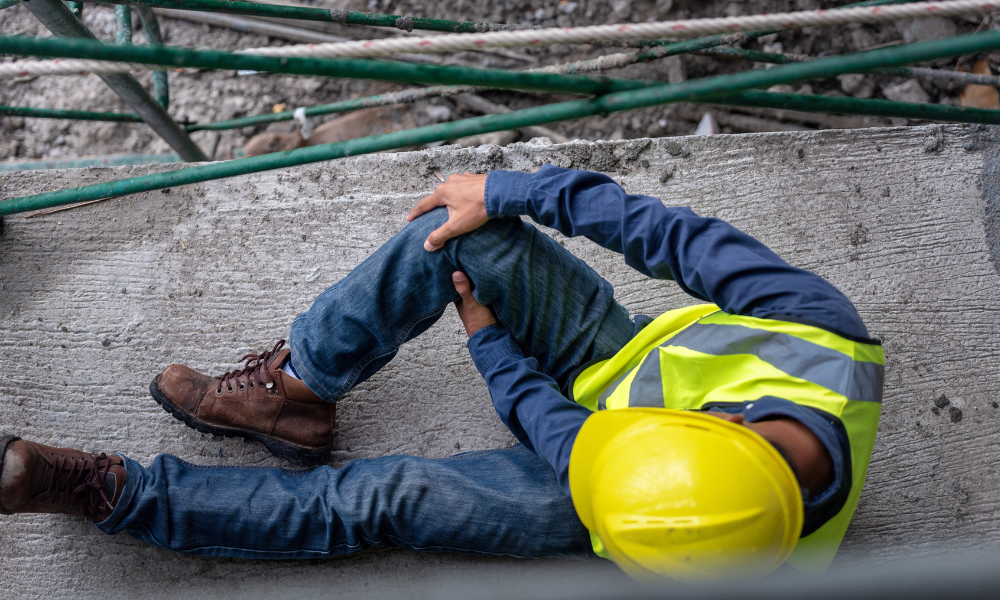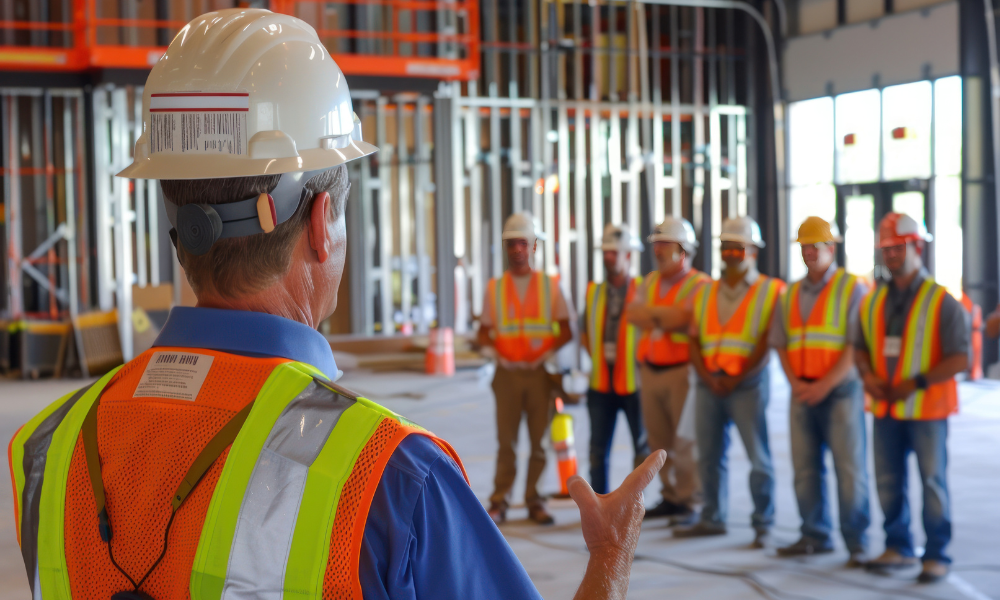Survey finds 26% say their organization uses AI for OHS purposes

Artificial intelligence is steadily infiltrating Canadian workplaces—not just to boost productivity, but also to protect worker health and safety. Yet, despite growing optimism about its potential, new research shows that the actual adoption of AI in occupational health and safety (OHS) remains limited. That’s one of the key takeaways from a landmark study presented by Arif Jetha during the Institute for Work & Health’s (IWH) Speaker Series on Tuesday.
“We’re really just at the early stages of understanding the role AI can play in occupational health and safety,” says Jetha, associate scientific director at IWH and associate professor at the University of Toronto’s Dalla Lana School of Public Health. “Close to only one quarter of our survey participants indicated that their firms used AI for OHS.”
The study, led by Jetha and his team, draws on a comprehensive survey of 810 OHS professionals from Ontario and British Columbia conducted in the summer of 2024. Participants were recruited through the nationally representative Leger opinion panel and spanned a range of roles—from supervisors and senior managers to HR and union representatives—all sharing one common feature: responsibility for health and safety in their workplace.
“We wanted to know three things,” Jetha explains. “Are health and safety professionals using AI? How do they perceive it? And what factors influence whether or not it's being adopted?”
The survey finds that just 26% of respondents say their organizations currently use AI for OHS purposes. Over half report no usage at all, and 17% are unsure whether AI is even in play at their workplace.
Interestingly, Jetha notes that AI is more commonly used for general workplace functions than specifically for health and safety, revealing a gap between potential and practice. “This might suggest that while AI is being introduced at work, it hasn’t yet found its footing in OHS applications,” he says.
Among those who do report using AI for OHS, the most common applications include monitoring safety behaviours through AI-powered cameras and sensors, promoting health-enhancing behaviours, and preventing psychological injuries using tools like AI-enabled mental health chatbots and therapy applications.
Motivations and concerns
The motivations behind AI adoption are diverse, but some drivers stand out. “Participants rated modernizing health and safety practices, improving outcomes, and extracting insights from data as the top reasons for adopting AI,” Jetha notes.
However, enthusiasm is tempered by caution. Respondents from AI-using firms report greater awareness not just of the benefits, but also of the risks. “They’re more likely to point out high costs, lack of technical expertise, and concerns about the ethical implications of AI,” Jetha says. “It highlights that those who are actually working with the technology see both its promise and its pitfalls.”
Key patterns emerge
The study’s multivariate analysis reveals some telling patterns. Larger firms and those located in Ontario are significantly more likely to adopt AI tools for OHS than smaller firms or those based in British Columbia. Firms offering hybrid work arrangements also show higher adoption rates.
“One surprising finding was that firms classified as ‘highly hazardous’ had more than three times the odds of using AI for OHS compared to low-hazard firms,” Jetha reveals. “It may be that the most safety-sensitive organizations are turning to AI to protect vulnerable workers.”
Another key insight: organizations that are already highly responsive to health and safety concerns—those regularly addressing unsafe conditions and offering OHS training—are more likely to adopt AI. But Jetha is quick to note that industry type doesn't significantly affect adoption rates. “We didn’t find meaningful differences across sectors like manufacturing, services, or primary industries,” he says. “This might change as the technology matures.”
Where does the technology go from here?
While the findings offer a snapshot of where things stand today, Jetha emphasizes the need for longitudinal research. “As AI becomes more affordable and widespread, we expect to see a rise in adoption. But we need to track this over time.”
He also flags the lack of real-world evidence about the effectiveness of AI in improving OHS outcomes. “Our systematic review found only two studies testing AI tools in actual workplace settings—only one of which was high quality,” he explains. “So, while there’s a lot of hype, we need to be cautious. We just don’t know yet if these tools are truly making workplaces safer.”
One takeaway is clear: OHS professionals need to build their AI literacy. “If we don’t understand how these tools are designed and deployed, we can’t assess their impact on worker safety,” Jetha stresses. He points to emerging micro-credential programs across Canada as a starting point but says the field lacks OHS-specific training. “That’s a critical gap we need to fill.”
In a field where risk is ever-present and innovation can mean the difference between safety and harm, Jetha’s work is a timely call for critical engagement. “AI isn’t a silver bullet,” he says. “But if we approach it thoughtfully, it could be a powerful tool in our occupational health and safety toolkit.”





